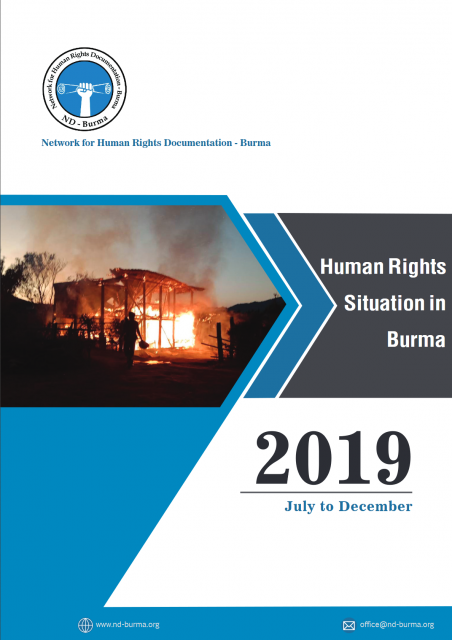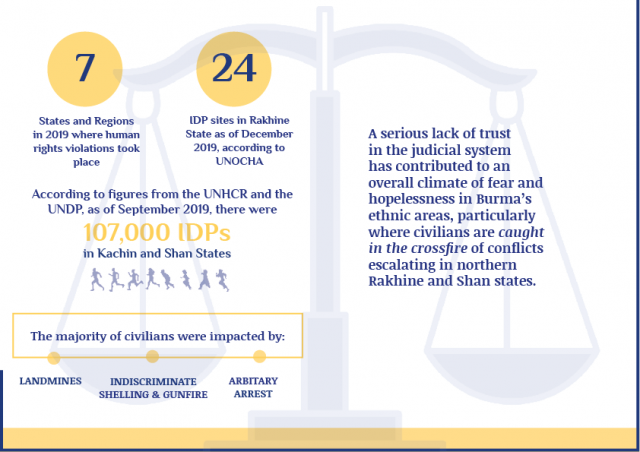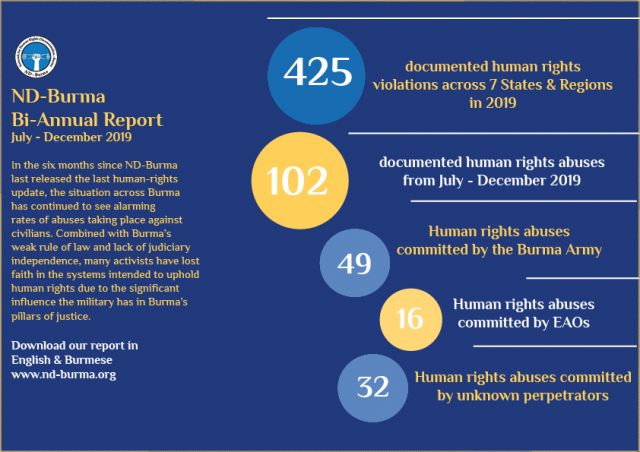Report
663 Views
Human Rights Situation in Burma (July to December 2019)
March 27th, 2020 •
Author:
Network for Human Rights Documentation-Burma
•
2 minute read


ND-Burma is extremely grateful to all interviewees for their courage in speaking the truth. ND-Burma is also grateful to its member organisations and their fieldworkers who continue to gather invaluable testimonies at their own great personal risk.
This report would not be possible without the work of ND-Burma members and their coordinated efforts to collect evidence of human rights abuses at the expense of their safety and security. We are reminded through the voices of civilians in this report that there is still a long way to go for peace in Burma, but are nonetheless motivated by their resilience to continue to speak truth to power against forces undermining prospects for change.
Key Findings
- 102 documented cases of human rights abuses by member organisations from July to December 2019 and a total of 425 documented human rights violations across 7 States and Regions in 2019 including Shan, Kachin, Rakhine, Chin, Mon, Mandalay and Tanintharyi region.
- The majority of civilians were impacted by landmines, arbitrary arrest and indiscriminate shelling and gunfire in civilian areas. These abuses are all exacerbated by an unstable security situation.
- Human rights violations took place in 10 Townships in northern Shan State. The majority of abuses took place in Kutkai and Namhsan.
- Warfare was particularly active in northern Rakhine Townships including Kyauktaw, Ponnagyun, Rathedaung, Buthidaung, Mrauk-U, Minbya and Myebon.
- Based on the ability of our members to document, the main perpetrators of human rights abuses according to our data were the Burma Army and EAOs. The Burma Army committed 49 violations and EAOs committed 16. Unknown perpetrators committed 32 abuses.
- Our members continued to experience serious threats to their security when reporting on violations, including restricted access to collect information and facilitate aid, as well as questioning by the authorities.
- The majority of human rights violations took place during skirmishes between the Burma Army and EAOs when civilians were forced to flee.
- A serious lack of trust in the judicial system has contributed to an overall climate of fear and hopelessness in Burma’s ethnic areas, particularly where civilians are caught in the crossfire of conflicts escalating in northern Rakhine and Shan states.


၎
င
၎
၎
၎
င
၎
၎

